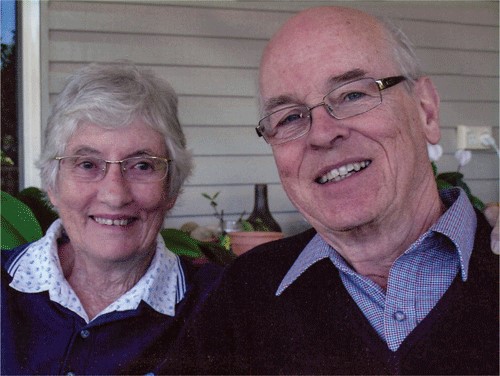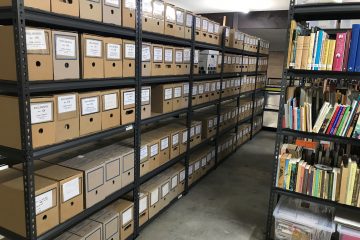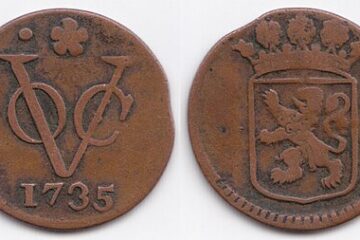Emeritus Professor Reinhard (Ted) Ferdinand Mathias Van Steveninck was a plant physiologist born on 28 July 1928 in Indonesia. He graduated from the State Agricultural University in Wageningen, Holland, in 1949, and earned an Ingenieurs (Ir.) Degree in March 1951. He worked as a plant breeder in charge of breeding linseed, flax, and lupins at the Crop Research Division at the Department of Scientific and Industrial Research (DSIR), Lincoln, New Zealand, from August 1951 under the directorship of Dr. Otto Frankel, FRS. He became interested in reproductive physiology and plant growth substances that control abscission in lupins during this period. He published research papers on these topics in the prestigious journal ‘Nature’ (Van Steveninck 1958, 1959, 1961, 1965), which was a rare achievement for a sole author at that time.
He married Margaret Elva Dalgleish. in 1955. She was born on July 11, 1931, in the town of Minlaton, South Australia, Australia.
He was awarded a National Research Fellowship in Plant Physiology at King’s College, University of London in 1958, where he enrolled for a Doctor of Philosophy (PhD) under the supervision of Professor TA Bennett-Clark, FRS, conducting research on the salt uptake mechanism in storage tissues. He was then seconded as a Senior Scientific Officer to the Agricultural Research Council at Wye College from September 1959 to July 1960, where he worked on the characterisation and identification of the abscission accelerating hormone in yellow lupins before returning to King’s College to complete his PhD in 1961. He then returned to the Crop Research Division of DSIR in New Zealand, where he was promoted to Senior Scientific Officer and published further research on salt accumulation mechanisms in storage tissues.
He was appointed to a three-year Senior Research Fellowship with Professor Rutherford Ness Robertson, FRS in the Botany Department at the University of Adelaide in August 1964, continuing his work on salt transport mechanisms and the biochemical and ultrastructural aspects of changes in mitochondrial activity. He was appointed Senior Lecturer in the Botany Department of the University of Queensland in June 1967 and was promoted to Reader in 1969. In June 1972, he was awarded a 1-year British Council Travel Grant, which he spent in the Botany School and Cavendish Laboratory at the University of Cambridge.
In February 1976, he was appointed Professor of Agriculture (Plant/Soil Sciences) in the School of Agriculture at La Trobe University, and Dean in June 1976 for a period of 2 years. He held this position again in 1983. He was a member of the Academic Board. In 1979, he spent 6 months as a Visiting Professor at the Botanische Institut der Tierärztlichen Hochschule in Hanover, conducting research with Professor André Läuchli on salinity tolerance in lupins and the ultrastructural localisation of ions by means of X-ray microprobe analysis. This became a major area of productive research conducted with his wife Margaret, his research assistant, as well as postgraduate students, postdoctoral fellows, and technical staff, and continued until he retired from La Trobe University.
Ted was an enthusiastic lecturer whose lectures were greatly enjoyed by the students. His plant physiology practical classes were obviously well thought out and worked well. At La Trobe, he presented courses in plant nutrition and stress physiology in the third year of the 4-year Bachelor of Agricultural Science (BAgSc) degree program and also supervised fourth-year research projects. He nurtured and trained several researchers who went on to make notable contributions to the wider agricultural sector and to our collective knowledge of how plants grow and thrive in hostile saline conditions. He was awarded a Doctor of Science (DSc.) environments.
Ted retired from La Trobe University in 1993, but remained active in research as an Emeritus Professor. He continued to publish research papers on salt transport and the mechanisms of salt tolerance in plants, as well as on the history of science and the philosophy of biology.
Ted passed away in 2017, followed by his wife a few months later.
See also:
Research Outputs La Trobe University

Dr. Margaret Elva Van Steveninck
Margaret Elva Dalgleish, also known as Margaret Elva Van Steveninck, was a notable Australian botanist and plant physiologist. She was born on July 11, 1931, in the town of Minlaton, South Australia, Australia. She completed her undergraduate studies at the University of Adelaide, where she earned a Bachelor of Science degree in 1952, majoring in Botany. She went on to complete her Ph.D. at the same university in 1956, also in Botany.
Margaret married Reinhard “Ted” Van Steveninck in 1955, and they worked together as a research team for many years. They both joined the Botany Department at the University of Adelaide, and later worked at La Trobe University in Melbourne. Their research primarily focused on plant physiology and they published numerous papers and chapters in scientific journals and books.
Margaret also worked as a research assistant at Adelaide University and subsequently as a Demonstrator and Senior Demonstrator in Botany at Queensland and La Trobe University. Her plant physiology research with her husband resulted in numerous joint publications including a chapter on microanalysis in ‘Electron microscopy of plant cells’.
Margaret was an accomplished scholar and was recognised for her contributions to science. She was elected as a Fellow of the Australian Academy of Science in 1980 and was also awarded the prestigious Australian Centenary Medal in 2001. She died on August 8, 2017, in Melbourne, Australia, at the age of 86.


